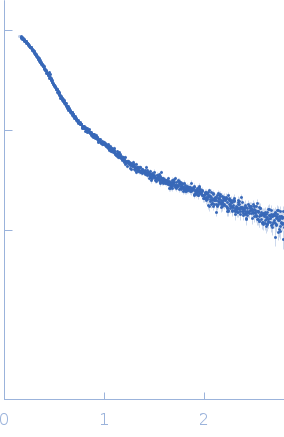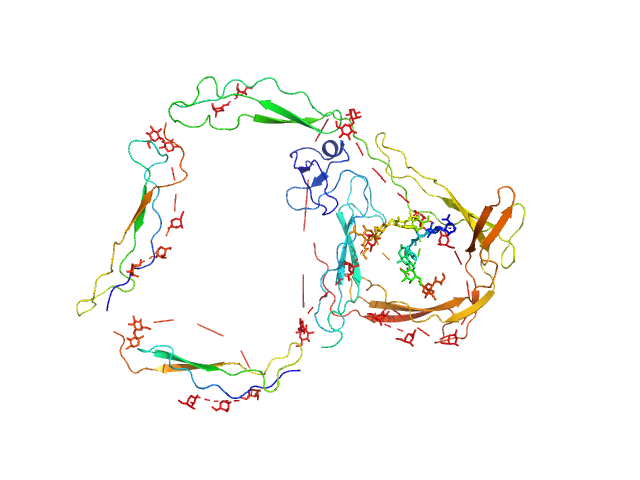|
Synchrotron SAXS data from solutions of recombinantly formed monomeric human E244K properdin in 10 mM HEPES pH 7.2, 150 mM NaCl, were collected EMBL-P12 bioSAXS beam line at the PETRAIII storage ring (Hamburg, Germany) equipped with a Pilatus 2M detector (I(s) vs s, where s = 4π sin θ/λ; 2θ is the scattering angle; λ = 0.124 nm). A solute concentration of 2.7 mg/ml was measured at 20°C. 20 successive 0.05 second frames were collected. The data were normalized to the intensity of the transmitted beam and radially averaged; the scattering of the solvent-blank was subtracted and scaled for protein concentration.
|
|
 s, nm-1
s, nm-1
